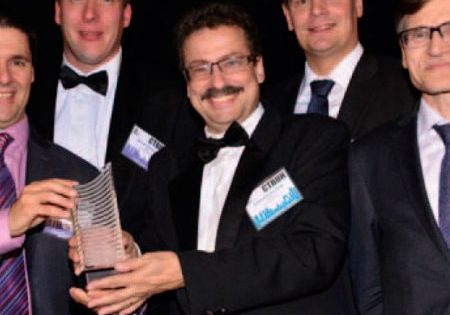Children’s hands are the focus for early detection safety system.
MEILLER Aufzugtüren GmbH’s FingerGuard is designed to enhance lift safety for children. The company says glass lift doors harbor an inherent danger of crushing and shearing small hands. This can happen when they place both hands on the glass and do not realize that the landing doors on which they have placed their hands also move toward the door frame when the lift door opens. Their hands can become trapped between the door leaf and frame, and the door-opening motion of the motor will only be arrested when the maximum force of the door drive has been exceeded. This can result in serious injuries.
Ralph Fähnrich of the Federal Institute for Occupational Health and Safety in Germany, where MEILLER is based, explained:
“Fatal accidents are extremely rare. Taking into account the number of lifts in operation and the amount of time they have been in service, they have a very good safety record. It is safer to ride in a lift than it is in a car or train. With a total of 700,000 lifts in service in Germany, severe incidents are fortunately relatively rare.”
However, Fähnrich stated that the particular danger for small children lies in glass lifts (since they became fashionable in the early 1990s) and their ability to fascinate children when their hands are on the doors. “For this reason, glass doors must be made opaque up to a height of 110 cm, either by roughening the surface of the material or by using frosted glass,” he added. “Moreover, glass doors are heavier than metal doors. They are not so easy to stop from moving once they are closing.”
MEILLER said reducing the transparency of the lower half of the door panels below 110 cm “represents a considerable intervention in the visual impression of the door.” Also, giving the frame a repellent geometric form “might reduce the danger of cut-injuries but still does not really prevent the risk of hands being trapped and bruised.” Finally, spraying the glass panels with agents designed to smooth the surface and impede the adherence of hands “has yet to be proven effective in everyday lift operation and is explicitly rejected in EN 81-20.” The company continued:
“EN 81-20 provides for glass doors to be rendered non-transparent up to a height of 1,100 mm or, alternatively, to detect the presence of children’s fingers up to a height of at least 1,600 mm upon the doors opening or, alternatively, to limit the size of the gap up to a height of 1,600 mm to a maximum of 4 mm, or 5 mm in operation. Projections on glass doors may not exceed 1 mm, and radiuses on frames may not exceed 4 mm.”
The company’s products, including the Sillight, Safety Sill and the ScooterGuard systems, strove to make lift doors safer.
However, until the FingerGuard, products have offered only detection (not prevention) of children’s hands becoming trapped. While the signals generated when the frame is touched are being processed, and a command is being sent to the door controller in other systems, the door will stop too late. An additional problem is the possibility of misinterpreting changes in a door’s condition or running characteristics as a potential impending accident, as well as the lack of protection against damage from vandalism. Finally, complex assemblies, difficult configurations and a high susceptibility to malfunctions can impede the overall performance of the elevator system.
The company said it has addressed these problems. “The high probability of an accident occurring must be recognized so quickly that there is still enough time to halt the door before the child’s fingers come dangerously close to the gap,” it explained. The product is designed to recognize the impending problem before it occurs by taking the inertia of the door system and response time into consideration. Therefore, the focus is on monitoring the area before the door retraction zone, rather than on the frame and the door panels themselves. Narrow monitoring spaces (10-15 mm) provide enough time to halt the system, while reducing its response time and the probability of obstacle misinterpretation.
The FingerGuard’s sensor is designed to detect small fingers. Once such an obstacle is detected, the product will bring the door system to a standstill before the object even reaches the retraction zone. While MEILLER said halting a glass door at normal opening speed in the monitoring area sounds improbable and is not possible under normal conditions, it added that its solution accomplishes it using two specially developed components. First, a detector is positioned as required (using four screws). It must then undergo a single learning cycle. Second, a braking circuit is placed within the MEILLER MiDrive door drive system. It behaves passively under normal conditions and serves to separate the door controller and motor from the input signals of the door controller. The entire energy from the door drive is then used to counteract the motion of the lift door, ensuring the door halts its movement before fingers or hands can become trapped in the gap.
The system is usually connected with the door-open command and can be deactivated as soon as the door is opened completely. “In this way, the system monitors the eventuality of children’s hands becoming trapped only in conjunction with the door-opening motion, thus avoiding any misinterpretation outside these phases,” the company said. FingerGuard is available both for center-opening and telescopic lift doors.
- Figure 1
- Figure 2
Get more of Elevator World. Sign up for our free e-newsletter.











